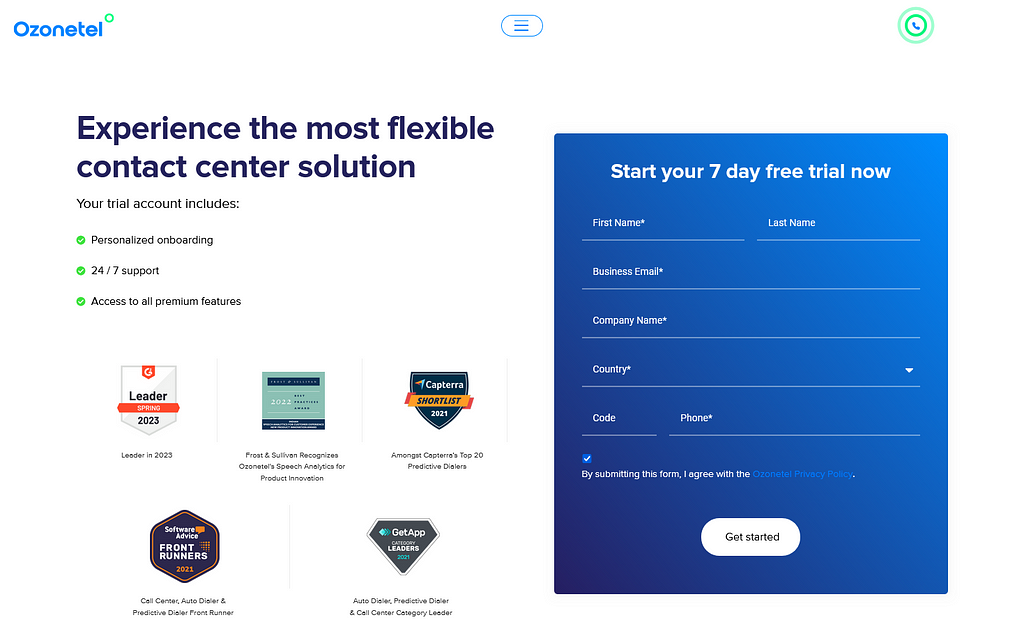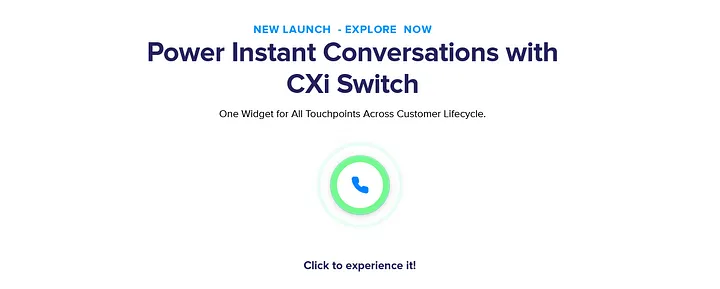- Resources
- 8 things people hate most about your customer care. And how to fix it
8 things people hate most about your customer care. And how to fix it

Customer service centers are high-stress environments.
Most incoming calls are complaints, and understandably, the people calling aren’t in the best of moods. It isn’t easy to motivate agents to thrive in this environment. And since many customer support centers are still treated as cost centers, budgets are tight. Calls often exceed the number of agents available, leading to high call volumes. Often agents handle calls back-to-back. And, sometimes they must even manage calls and chats simultaneously.
Yet, all the problems listed above are solvable. Over the past decade of working with contact centers, we’ve learned some of the best practices for dealing with each of these challenges. And of course, we have worked hard to provide technology to help.
Let’s delve into each problem and see how it can be solved in efficient, cost-effective ways:
As a result, here are the top 9 pain points your customers face when they reach out to your customer support*:
- Long wait times (before reaching an agent)
- Slow service (when they connect with the agent)
- Self-service is not available or is difficult to use
- Agents are rude or insensitive
- Agents aren’t knowledgeable enough
- Customers need to repeat information when a call is transferred
- Customers cannot get service in the preferred channel
- Service isn’t personalized
In this article, we will explore:
8 things people hate most about your customer care.
COMPLAINT #1
Long Wait Times (Before Reaching an Agent)
What’s the issue? When customers call in with complaints, most likely they’re already facing a problem. What they want, more than anything else at that moment, is for the problem to disappear fast. This should be—and probably is— your support center’s most important focus. Reducing the time taken to reach your contact center is the best place to begin.
Why does it happen? There are two main reasons why your customer cannot reach a live agent fast:
Agents are unavailable to take calls or chats leading to long queue times
The IVR interaction takes too long.
How to measure it? Average Time in Queue or Average Wait Time
In 2018, customers spent an average of 75 seconds in the queue (Read the research here). On phone calls, a long IVR menu may further delay a customer. On chats, your chatbot may waste their time. A measure of around 10 seconds to reach a live agent is far more ideal. And it’s doable too.
How to fix it?
Plan staff & forecast regularly. The most customer-centric businesses treat their call center data as data as a gold mine. You can use this data to plan your agent staffing more efficiently. If you delve into your call reports regularly, you can see what time of day or day of week call traffic is high, and when it isn’t.
Use this data to plan your agent rosters accordingly. If the metrics show a need for increased staff, use the data to quantify exactly what your increased budget requirements are.
(Also Read: Call Queue Management: Plan Staffing)
Create Fallbacks. Take your metrics seriously. If calls do not connect with a live agent within the stipulated time, you should provide fallbacks.
Route to another skill group: Your fallback could be another department or support center, a support crew you keep on a work-from-home basis, or a trainee. You could also set your fallback to a voice bot/chatbot/answering machine or voice mail.
(Also Read: Call Queue Management: Create Fallbacks) .
Automate callbacks. When agents are too tied up to answer a call (or chat), don’t keep your customer waiting. It is disrespectful. Instead, do the decent thing— let them hang up, and promise a callback. And then deliver on that promise. You can use an IVR/Voice bot or a simple voicemail to take down their complaint. Use the Abandoned Call Alert feature to send alerts to your agent or manager’s inbox. Or schedule a call back into your dialer.
(Also read: How to automate callbacks)
Offer Voice Mail: Give callers waiting in the queue an option to leave a voicemail and get a callback from the agent. Best practices suggest that you should offer this fallback only if you can return the call within 15 minutes of receiving the voicemail.
Prioritize callers in the queue. When a lot of callers are waiting in the queue, you can prioritize your customers as opposed to your non-customers. A CRM integration can be used to recognize your customers while diverting casual callers to an IVR/voice bot/chatbot. You can use Dynamic Queue Reprioritisation to divert important callers to the top of the queue.
(Also Read: How to treat your customer like a VIP)
Remove the IVR when it’s not essential. Wherever possible, automate. Use your CTI integrations to dip into your CRM/Ticketing software data. Bypass the IVR when possible. For example, customers with unresolved complaints, or high-value customers can be directly connected with a well-trained, live agent. Prospects can automatically connect with agents they last spoke to.
(Also read:Sticky Agents)
Keep IVR menus short. If a long IVR menu can’t be avoided, consider using voice bots, or conversational IVR.
(Also Read: Modern IVR)
Add Self-service. Analyze what calls your customer support center gets. If you get a lot of “how-to” questions, consider creating a bot or a conversational IVR to answer these. If you get a lot of transactional calls—such as rescheduling meetings, making bookings, or cancellations—consider diverting these to self-service. It will free up your call queues for tasks where a live agent is more essential.
COMPLAINT #2
Slow Service (When an agent is reached)
What’s the issue? It isn’t enough for customers to connect with a live agent. The agent should be equipped with the training and information needed to handle the task. If your agents themselves are fumbling around looking for information, it will only frustrate your customers.
Why does it happen? Reasons for slow service can be many and varied. It could include:
Poor connections. Poor call quality can lead to voice lags, and both agents and customers may waste precious time repeating information.
Poor training. Agents may not be trained to handle the particular
Disconnected Systems.
How to measure it? Average Handle Time + Csat.
In 2018, Average Handle Times were 3 minutes per call. Your average handle times, however, will depend upon your product/industry. Instead of considering your average handle times in isolation, correlate it with your customer satisfaction scores, before drawing any conclusions.
How to fix it? If indeed, customer dissatisfaction coordinates with long handle times, then you may need to consider these methods to reduce your handle times.
Crystal-clear voice quality (Also read: Insider tips for ensuring high voice quality in your cloud telephony solution)
Skill Hunting. Dividing your agents into skills can help you train your staff more easily. Routing calls to the right skills will then lead to a corresponding increase in Csat. (Also Read:A guide to creating skills)
CTI Integrations. Are your agents getting all the information they require? A good CTI integration with your CRM or Ticketing Software will ensure your agents have all the information they require at their fingertips, leading to far faster resolutions. (Also read: Applications of Call Center CTI)
COMPLAINT #3
Self-service is difficult to use
What’s the issue? It’s not enough to implement self-service, you need to ensure it is fast, convenient, and easy to use. You need to carefully track user experience and satisfaction levels. And continuously improve your system.
Why does it happen? A few reasons for bad self-service include:
It is badly designed. A badly designed self-service is difficult to use. Ideally, a UX designer should be involved in creating a good self-service. The benchmark is that 50% of calls should be handled in self-service within 6 months of implementation, else it is best to remove it and then review what did not work.
It’s time-consuming. A caller may get frustrated if a bot/IVR is asking too many questions before providing a service/giving information.
The task isn’t suited to self-service. Self-service should be selected for repetitive, transactional tasks that can be completed faster via self-service than by a live agent. For example, a cancellation.
The customer doesn’t like self-service. Some customers prefer self-service and others don’t. Some may need a live agent to guide them the first few times. Knowing your customer profiles can help you decide which customers to divert to self-service, and/or guide them.
How to measure it? CES And FCR.
First call resolution (FCR) is a good measure to apply to your self-service. If your Self-service results in an escalation or a repeat call, consider it a minus point. Also, use surveys to measure Customer effort (Customer Effort Score or CES) at the end of each transaction.
How to fix it?
Keep a live agent handy. Implementing a perfect self-service loop takes time. Defining fallback rules for your self-service help. For example, if your bot/conversational IVR doesn’t understand customer requests after 1-2 tries, it should immediately connect to a live agent.
Create a self-learning system. An AI-powered bot will learn from its mistakes. For example, if the caller wants to know how to fix a product and the bot connects it to the wrong resource, they will express some dissatisfaction. The bot can divert to a live agent. The live agent will connect to the correct resource, and the bot will learn from this mistake, and next time connect the user to the right resource.
(Also Read: Guidelines for Implementing Self-Service)
COMPLAINT #4
Rude or insensitive agents
What’s the issue? This one is self-explanatory. Rudeness leads to unhappy customers
Why does it happen? Overworked agents may be rude. Untrained agents may come across as rude. And connecting customers belonging to one culture with agents belonging to another culture can lead to the perception of rudeness, even if none was intended.
How to measure it?CSAT
The simplest way to measure dissatisfaction is to route a customer to an IVR/survey at the end of a call or chat. Rude agents can be called out under a question inquiring about the cause for dissatisfaction, to help pinpoint if this is what is making your customer see red. Alternately speech analytics can be used to catch ‘rude’ or offensive language used by the agent during the call.
How to fix it?
Creating a workplace that values and appreciates good customer service is important.
Ensuring your agents get enough breaks, especially after handling difficult calls is necessary.
Cultural sensitivity and training can help improve agent performance.
Digital assistants can use speech analytics to cue agents when they are being rude, or alert managers.
Barge-in. Managers can use speech analytics to monitor calls and barge-in when necessary.
(Also Read: Tools and tips for training customer support agents)
COMPLAINT #5
Agents aren’t knowledgeable.
What’s the issue? Often, agents don’t have access to the knowledge they need to solve a problem.
Why does it happen? The issue could be a lack of training or disconnected/difficult-to-use knowledge bases.
How to measure it? FCR
When agents don’t have the knowledge needed to solve the problem, they will need to escalate the issue, reducing the First call resolution or FCR.
How to fix it?
Skill-based routing. As I mentioned before, dividing agents into skills allows them to get skilled at handling certain issues. Skill-based routing can be used to divert customers to the right skill for the job. (Also Read: Call Routing Tips)
Smart Attendants. A smart IVR or auto-attendant can gauge what a customer’s problem is and divert them to the agent best trained at handling that problem.
Digital Assistants. Digital assistants are an intuitive, effortless way to access knowledge. They can be used by agents in the contact center to access the knowledge needed to solve problems.
The future of knowledge is AI assistants that monitor calls, understand the context, and use existing customer databases to pop up relevant information to the agents, to resolve the issue faster. (Also Read: Contact Center Trends 2019)
COMPLAINT #6
Repeating info when the call is transferred
What’s the issue? When a call is transferred, the agent transferring the call should brief the agent about everything the customer has already told them, so that the caller doesn’t have to repeat themselves.
Why does it happen? Using cold transfers means that the agent to whom the call is transferred has no idea of the call context and has to ask the customer to repeat anything they said before.
How to measure it?Average Handle Times and CSAT
Asking customers to repeat themselves increases average handle times and decreases CSAT.
How to fix it?
Warm Transfers: It must be made a practice that whenever a customer has given an agent any information that isn’t mentioned on their ticketing history or previous call disposition—the agent only transfers calls using consultative hold or warm transfers. (Also read: A guide to warm transfers: how, when and why to use them)
COMPLAINT #7
Cannot get service in the preferred channel
What’s the issue? Today’s customer is spoilt for choice. They expect to be able to connect to your customer support via social media, messaging service, email, phone, or chat, whatever is most convenient at that moment. The time isn’t far when a customer will use their digital assistants to place calls while driving, cooking, or walking.
How to fix it?
Use a contact center solution that is omnichannel. Your platform should support both voice and digital channels including WhatsApp, social media, SMS, chatbots, and email.
(Also Read: Why your contact center needs to integrate Facebook messaging, A Cloud telephony WhatsApp integration)
COMPLAINT #8
Service isn’t personalized
What’s the issue? Customers have gotten used to personalized service and have come to expect it in all their interactions. Greeting customers by their name, knowing their caller/ticket/purchase history and their various preferences are all part of personalizing the experience for them.
Why does it happen? Disintegrated systems. All your software: your CRM, your in-app and web experiences, your social media, live chat, and voice interactions—all these systems must talk to each other and share data if we want to create a single, unified customer experience.
How to measure it? Average Handle Times and CSAT or NPS
Asking customers questions increases handle times. Non-personalized service decreases CSAT and Net Promoter Scores.
How to fix it?
Customer journey mapping.
Omnichannel presence. (Also Read: How can your contact center deliver Omnichannel Service)
CTI Integrations
Conclusions
Customer support isn’t easy. But in an increasingly digital world, it is often the only human interaction people have with your brand.
It is important to get it done right. I hope this article was able to illustrate that with the right tools, training, and motivation, creating a happy and successful customer service department is an achievable goal







